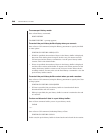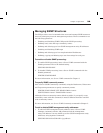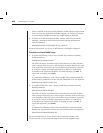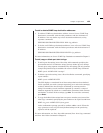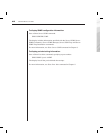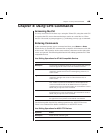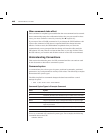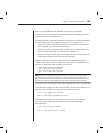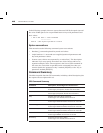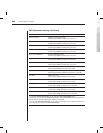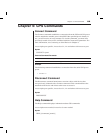
46 CPS Installer/User Guide
When commands take effect
Each command is completely processed before the next command can be entered.
Some commands prompt for confirmation before they are processed. In these
cases, you must confirm or cancel by entering Y or N respectively.
If you enter a Server FLASH command or if you change the CPS IP address with
a Server Set command, a CPS reboot is required before the change becomes
effective. In these cases, the CPS database is updated when you enter the
command and you are prompted that the change will not take effect until the
CPS reboots. You may choose to reboot at that time, or you may decline. When
the CPS reboots, your session and all other sessions on the CPS are terminated.
Understanding Conventions
This section describes the parts of a CPS command and the conventions used
in this document to describe a command’s syntax.
Command syntax
A command may have four types of syntax: positional commands, positional
parameters, keyword parameters and keyword values. The following examples
demonstrate the syntax types.
The following Set Port command changes the baud rate and flow control
settings for port 2.
> PORT 2 SET BAUD=57600 FLOW=XONXOF
Command Syntax Types in Example Command
Value Syntax
PORT Positional command.
2 Positional parameter that indicates the port number for the command.
SET Positional command that indicates port settings are to be changed.
BAUD Keyword parameter, which is always followed by an equal (=) sign.
57600 Keyword value indicating the baud rate value for the BAUD
keyword parameter.
FLOW Keyword parameter, which is always followed by an equal (=) sign.
XONXOF Keyword value.
Not every command will contain all syntax types. For example, the following
command reboots the CPS.
>SERVER REBOOT



